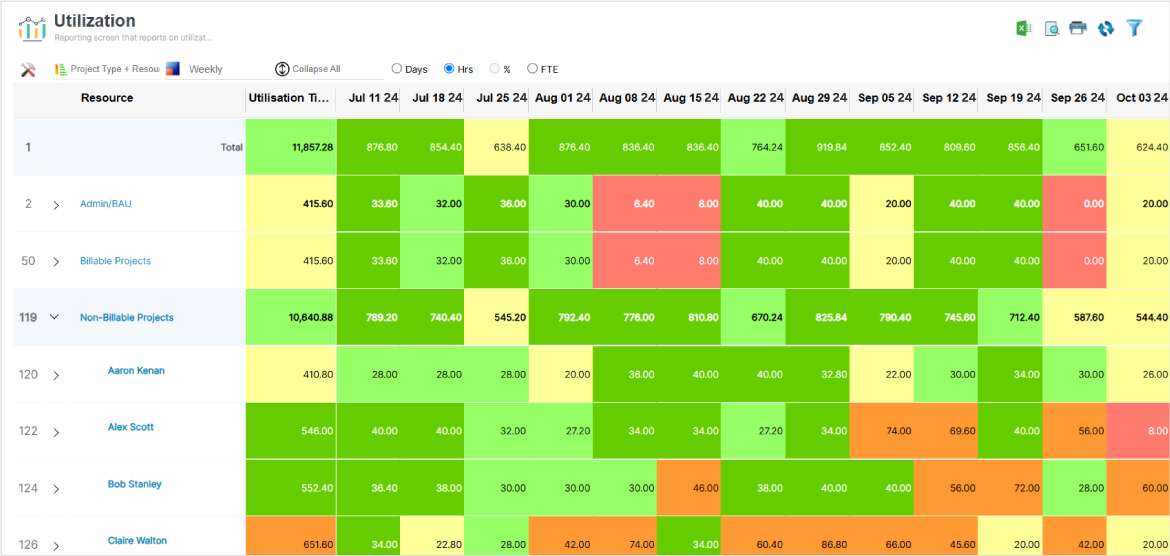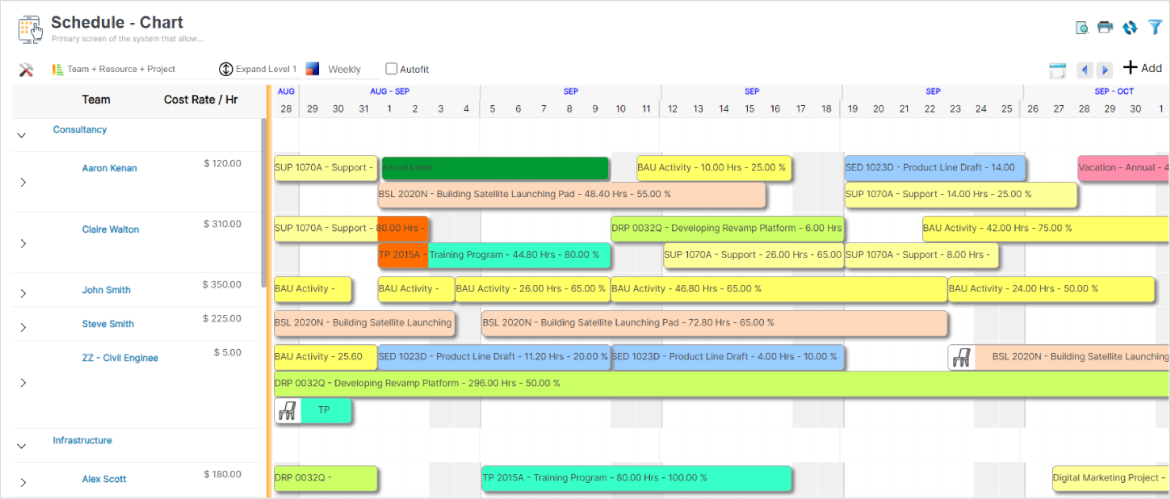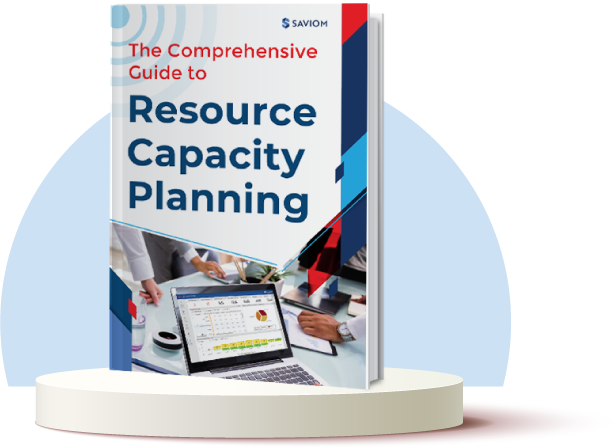Imagine this scenario: A team racing against tight deadlines, where some members are weighed down with tasks while others find themselves with little to contribute. This isn’t a reflection of sub-par skills or effort- it’s a result of uneven workload distribution.
This imbalance doesn’t just affect individual performance; it undermines team morale, reduces productivity, and increases operational costs, ultimately impacting business profitability.
To avoid this, managers must go beyond simply assigning tasks. Effective workload distribution ensures that the responsibilities are balanced across the team. This approach leads to greater employee satisfaction, optimized resource utilization, and enhanced business performance.
In this blog, we will explore the definition of workload distribution, its importance, and the strategies for its effective implementation.
Let’s begin.
What is Workload Distribution?
Workload distribution involves assigning tasks and responsibilities among team members in a balanced and equitable manner to maximize efficiency. This process takes into account each team member’s capacity and availability, ensuring that everyone can contribute effectively.
For instance, consider a marketing firm operating in a high-pressure environment where multiple departments compete to meet tight deadlines. In this scenario, certain team members, those known for their efficiency and ability to complete tasks with minimal back-and-forth, are often overburdened, while others remain underutilized.
This imbalance can lead to burnout for those carrying the heaviest load, while those with fewer tasks may feel disengaged. However, by carefully assessing the strengths and current capacity of the entire team, managers can strategically distribute tasks among the team. This helps optimize resource utilization, increase team productivity, and maintain high morale across the board.
Now that we know what workload distribution is let’s explore its benefits.
Key Benefits of Workload Distribution
Balanced workload distribution is crucial for a business as it boosts productivity, alleviates stress, and aids in employee retention, among other benefits. Read on to learn more:
Improves Employee Efficiency Across Tasks
Efficient workload distribution ensures tasks are assigned according to employee capacity, availability, and skill sets. This prevents under- and over-allocation, allowing team members to focus on their responsibilities without feeling overwhelmed or underutilized. Consequently, this leads to higher employee engagement, increased productivity, and higher profit margins.
Maximizes Employee Productivity and Performance
Proper workload distribution involves identifying and assigning employees whose skill sets align with the project’s requirements. This approach allows managers to schedule the best-available-best-fit resources instead of the first-available-first-fit ones. As a result, when the right people are working on the right tasks, it improves workforce productivity and performance.
Read More: Employee Productivity: What is it & Why Does it Matter?
Fosters Teamwork and Collaboration
When the workload is distributed equitably, team members feel valued and integral to the shared goal. This sense of fairness fosters mutual respect and trust, encouraging open communication and shared problem-solving. Ultimately, this strengthens teamwork, enhances collaboration, and drives better project objectives and outcomes.
Boosts Employee Work-Life Balance
A balanced workload distribution ensures that no employee is overloaded with excessive responsibilities, allowing them to manage and complete their tasks efficiently. This creates time for personal activities and hobbies, allowing employees to relax and unwind after work. As a result, it supports both physical and mental health, ultimately enhancing work-life balance.
Helps Retain Skilled and High-Performing Employees
Prioritizing equitable workload distribution ensures employees are neither overwhelmed nor underutilized, allowing them to contribute effectively. When skilled, high-performing individuals see their abilities being fully leveraged, they feel valued. This recognition drives employee engagement, boosts productivity, and enhances retention.
Read More: 9 Effective Employee Retention Strategies for Your Workforce
We’ve explored the benefits of effective workload distribution. Now, let’s examine the consequences of not implementing proper workload distribution.
Consequences of Poor Workload Distribution
Poor workload distribution negatively impacts team performance, lowers productivity, and results in missed deadlines. Read on:
Elevated Employee Stress Levels
When firms face tight deadlines, high-performing employees may be assigned additional tasks due to their ability to complete them with minimal supervision. This poor workload distribution can lead to feelings of being unsupported, resulting in increased stress, more errors, missed deadlines, and reduced job satisfaction.
Reduced Workforce Productivity
Inefficient workload distribution leads to critical employees being overburdened, causing burnout and slower performance. Meanwhile, others with lighter workloads may become disengaged or feel underappreciated, leading to reduced motivation. This imbalance disrupts team dynamics and reduces productivity across the organization.
Read More: Common Workforce Productivity Killers and How to Beat Them Effectively?
Increased Employee Burnout and Low Morale
Poor workload distribution, where tasks are consistently assigned beyond an employee’s skills & competencies, can lead to overutilization and burnout. Conversely, assigning work well below an employee’s capabilities results in underutilization, low employee morale, disengagement, etc., impacting overall productivity.
High Attrition Rates
Inefficient workload distribution by managers can lead to overburdening or underutilizing employees, causing them to feel overwhelmed, burnout, disengaged, etc. Further, they may feel the firm neglects their well-being and contributions, prompting them to seek opportunities elsewhere, resulting in higher attrition rates.
Read More: 10 Effective Strategies to Combat Unplanned Attrition in the IT Industry
Let’s now explore key strategies one must implement for effective and balanced workload distribution within a firm.
9 Best Strategies for Balanced Workload Distribution
Effective workload distribution among the team is the key to maximizing productivity and sustainable growth. Here are several strategies to help you achieve this.
Assess Workload Requirements in Advance
Managers should evaluate workload requirements, including the type, quantity, and quality of resources needed, well in advance. This foresight allows teams to prepare for workload fluctuations, allocate resources effectively, and ensure smoother task distribution.
Evaluate Team Capacity and Skills
Firms must consistently assess team capacity and skills to determine if the resources have the necessary competencies to handle tasks. If gaps are identified, appropriate measures can be taken to address them. This ensures the right resources are available to share the workload and deliver higher output.
Read More: What is Capacity Planning? An Ultimate Guide for Business Efficiency
Consider Employee Preferences and Interests
When distributing tasks, aligning work with employees’ preferences and interests is essential. This enhances workforce engagement, employee productivity, and the quality of their output. Further, it fosters a sense of accountability and ownership, driving improved performance and overall business efficiency.
Prioritize Projects and Allocate Tasks
Managers should prioritize projects based on urgency, impact, and ROI, then organize tasks by dependency. Consequently, firms must first address tasks on the critical path, while float tasks follow in sequence. This approach optimizes resource allocation, reduces bottlenecks, and minimizes project delays.
Read More: What Project Interdependencies Span Your Portfolio?
Clearly Define Roles and Responsibilities
Clear communication about roles and responsibilities eliminates confusion and ensures everyone knows their part in a project. Employees who understand their specific tasks take ownership and execute work more efficiently. This clarity reduces duplication of effort, fosters accountability, and streamlines workflow.
Monitor and Adjust Employee Workloads
Monitoring workloads helps managers identify when some team members are overloaded while others have the capacity to take on more. When necessary, managers should adjust or redistribute tasks to maintain a fair balance of work. This improves employee well-being, boosts productivity, and ensures timely delivery.

SAVIOM offers advanced Utilization Reports and Color-coded Heatmaps that help managers ensure balanced workload distribution and optimized utilization levels.
Implement Resource Optimization Techniques as Appropriate
Organizations can implement resource optimization techniques, such as leveling and smoothing, to prevent overutilization. By adjusting project start or end dates or adding additional resources, they can ensure a balanced distribution of tasks. This promotes optimal resource utilization, enhances productivity, and ensures successful project delivery.
Read More: What is Resource Optimization? A Complete Guide to Improve Project Delivery
Facilitate Suitable Training Opportunities
Training enhances employees’ skills, enabling them to handle a wider range of tasks. By offering retraining/upskilling, job shadowing, and IDPs, companies build a versatile talent pool to manage sudden workload spikes or step in during resource shortages. This ensures balanced task distribution and seamless project continuity.
Leverage a Workload Management Tool
Managers should use workload management software to assess capacity versus demand, adjust allocations, and track utilization levels. This enables them to balance workloads effectively, optimize employee efficiency, and improve overall productivity, driving enhanced performance and business outcomes.
Let’s explore how modern resource management software contributes to effective workload distribution.
How Can a Robust Resource Management Tool Help?
An enterprise-grade resource management software provides advanced features and functionalities that help organizations distribute tasks efficiently and achieve sustainability and profitability effectively. Here’s how:
- The tool provides enterprise-wide visibility into the resource pool in terms of skills, experience, competencies, etc. This empowers managers to distribute tasks more effectively by understanding everyone’s capacity, expertise, and availability.
- The tool also maintains an up-to-date competency matrix that helps deploy the best-fit resources for projects.
- The software offers drag-and-drop functionality for seamless allocation, reassignment, and adjustments, ensuring that workloads remain balanced as priorities or timelines shift.

SAVIOM’s Multidimensional Scheduler helps managers optimize task allocations to ensure balanced workloads.
- Moreover, the tool’s forecasting and capacity planning feature helps predict and address future project needs, allowing for proactive and efficient resource planning.
- The software’s resource utilization reports and color-coded heatmaps highlight workload imbalances and enable task redistribution.
- Finally, the open seat feature allows managers to create and publish positions across the firm. Accordingly, interested candidates can apply, and managers can select the most suitable ones for the work and ensure efficient distribution.
Conclusion
As we now know, workload distribution is one of the integral aspects of any organization. When done right, it ensures everyone is working to their strengths, leading to a more balanced and motivated team. It further prevents employee burnout and promotes clarity, making employees feel more engaged and naturally boosting productivity. In the end, this thoughtful approach helps the business grow in a way that’s not just sustainable but satisfying for every resource involved.
So, what workload distribution strategies are you implementing within your firm?
The Glossary
Read More: Glossary of Resource Workforce Planning, Scheduling and Management











